Lorem ipsum dolor amet, consect adipiscing elit, diam nonummy.
2020 was a tough year. Numbers are not needed to demonstrate that. A lot of resilience was required. Individuals, leaders, organisations, community, government, … we all struggled, we all faced uncertainty and we all became more resilient. How this journey happens, is different for each one of us.
This project aim was to facilitate this process for leaders and individuals who work on medium-large organisations and that inevitably face constant change.
My role in this project was UX Designer and Researcher. In a team of two (a Chief Technology Officer and myself), I was leading and facilitating the human-centred design process across the project, building the relationship and enhancing collaboration with the client. I designed and facilitate the workshops, planned and conducted researcher, analyse the data and communicated the insights, and conceptualised and crafted the proposal.
It was mostly my self, with some check-ins by the CTO to make sure I was moving forward. I would probably honestly say that this project was mostly a team of one :).
The client of this project is an acclaimed international author and speaker, who works with organisations to help facilitate, mentor, train and coach on how to manage change.
They have a program for change that combines different methods to provide comprehensive programs of work that can drive transformational change, but now with the pandemic, they need to move to the online world as soon as possible, to deliver the same value even when face-to-face training is not possible.
They had a version of a self-hosted platform in the format of an interactive PDF, but has been found that it doesn’t convey the value expectation of large organisations who are used to access information via a digital platform like mobile apps or websites.
Conceptualise and design an online platform that helps individuals and leaders from medium-large organisations to develop resilience in the face of an ever-changing world.
1.- Understand the current needs of leaders and individual about managing change in a professional environment
2.- Provide a relevant program that Is accessible and meaningful
3.- Inspire leaders and individuals to strengthen their resilience
4.- Guide individuals and leaders to unleash their inner resilience
![]()
Business canvas to reflect
The first step was to understand the business objectives, as well as the needs and desires of the different users who will be using the platform (from now on called UTR platform).
I planned and designed a kick-off meeting, to set common goals, expectations and the purpose of the project.
I also asked our client to do some pre-work, to come to the kick-off meeting with more clarity and with deeper considerations.
During this meeting, we defined an initial Business Model Canvas which helped us to put the objectives of this project in context.

Service blueprint as an alignment tool
We also defined an initial Service BluePrint, including the experience of both profiles, leaders and individuals, to better understand their relationship with the platform, how the interaction could be experienced, and an initial approximation at how the service should be provided and what backstage work would be involved.
This was a crucial step since it allowed us to understand all that was on the head of our client, and also, identify any inconsistencies with the expectations.

Spotting assumptions
We finished the workshop mapping out our assumptions. Then this was developed further and I categorise them by high, medium and low risk, in order to prioritize the ones we should address during the primary research.

Understanding the program
Now we have more clarity, and it’s time for me to
dive deeper into understanding the current offer of our client.
– What is involved in a program?
– How programs are structured?
– What is the content of these programs?

![]()

Talking directly to users.
Observing early on the process.
Our primary research focused on interviews with users who fit the personas of leaders and individuals who work within ICT organisations.
We wanted to find out their perspectives on things such as how they are currently adapting to new challenges, how leaders are supporting individuals in the face of constant change, what would they need to feel more confident when facing uncertainty.
So, I…
1. Defined the research objectives
2. Crafted relevant questions to ask
3. Created a discussion guide and a low-fi prototype that would help me to validate some risky assumptions
4. Recruited participants through a recruitment agency
5. Did a run test
6. Conducted the interviews!
I interviewed mostly leaders of a team bigger than 3 people, working in the IT sector or in government, from a variety of cultural backgrounds and company sizes.
After conducting the interviews, I already had a new perspective on the platform. I realised it wasn’t enough for leaders to provide a tool that enhanced resilience to their team, but that they needed also accountability, as it was playing a big role, especially when most of them have moved remotely.

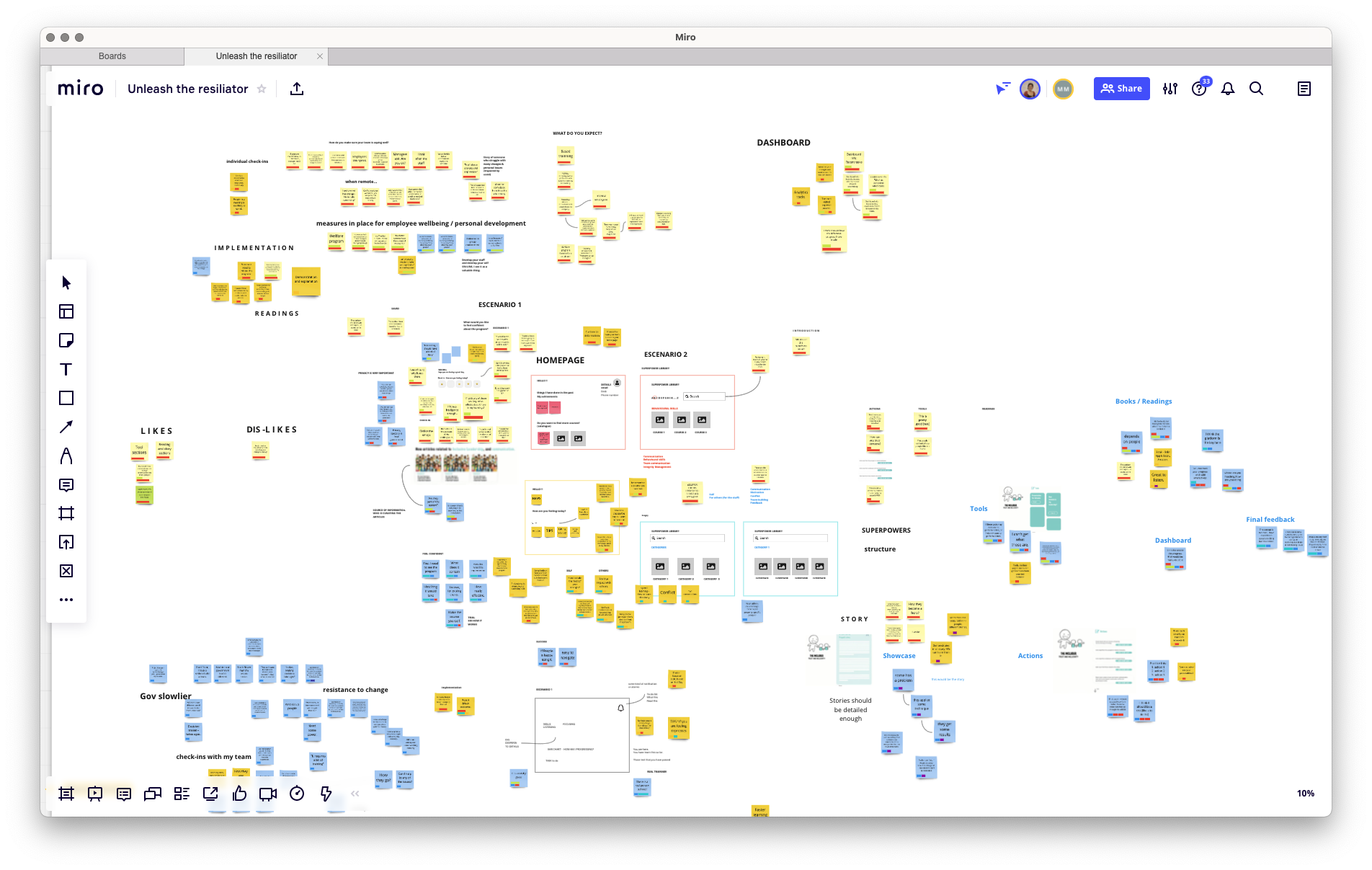
Consolidating and sharing learnings.
Once all interviews were finished, I synthesized the data and extracted some insights.
Some of the insights:
· Tracking professional development is relevant, especially for leaders who need to keep their team accountable.
· Measurable results are key for building confidence to implement and keep the program.
· Actions are perceived as successful outcome by leaders.
· Stories about taking action are a great source of learning and inspiration.
· Privacy and accountability are delicate, not all people share the same perspective, but for managers and leaders is important to see the progress of their team.
From insights to opportunities
After communicating the insights, I framed few questions with the structure of the HMW, in order to invite stakeholders to engage in divergent thinking, generating more than one possible solution and to do not miss opportunities to explore and innovate.
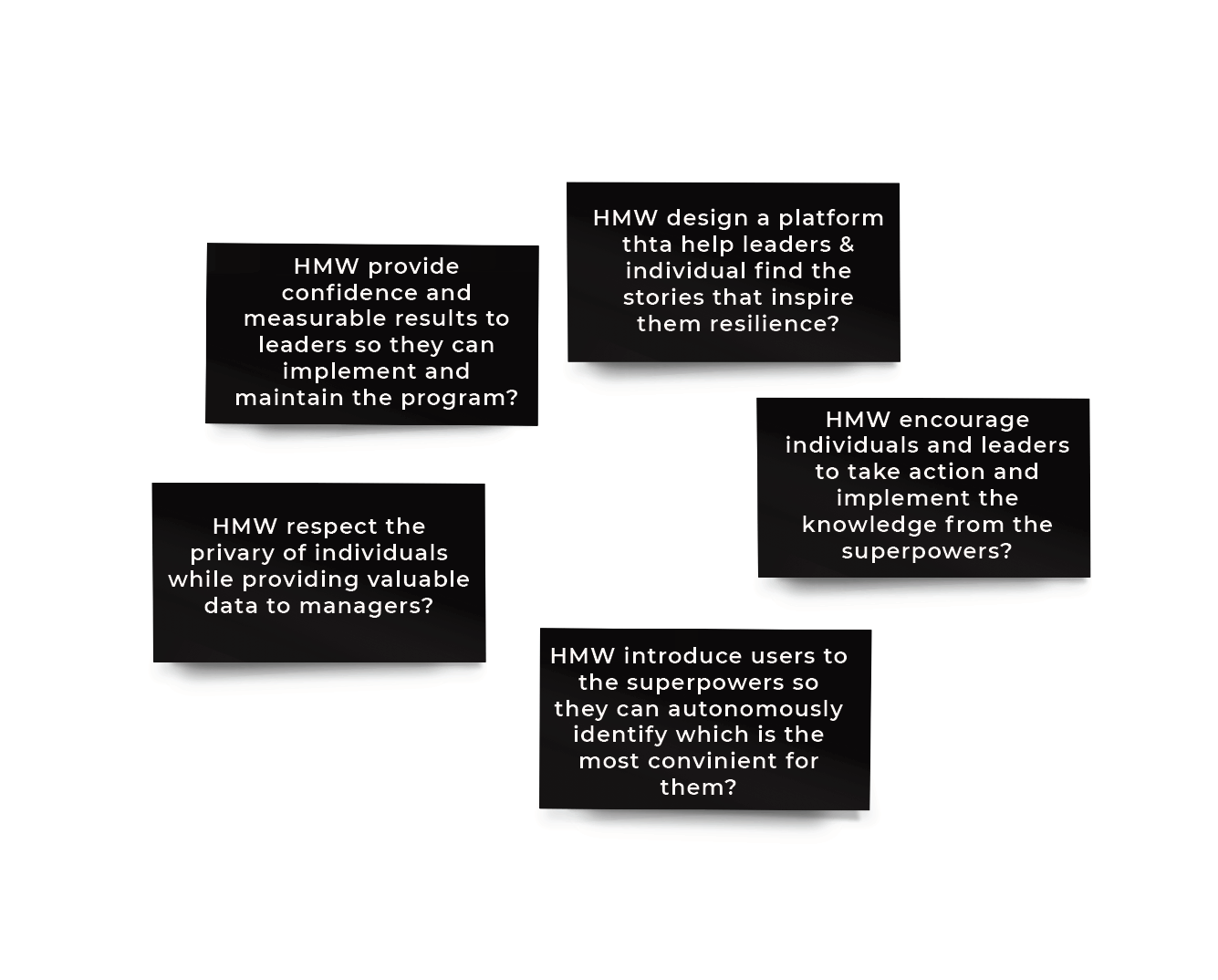
Uncovering insights from the analysis
of more than 25 products and services
I also needed to understand the competitive landscape and how other companies and
organisations were solving the same or similar problem.
– I identified potential competitors that address challenges we are also seeking to
address.
– I compared and identified key features, benefits and offerings.
– I analysed the relationship between competitors and the user pains and gains detected from the primary research.
I looked at the concept, the value they were selling, the approach they used, the information architecture and the features of the competitor.

I also looked at different industries or spaces, to see similarities and differences within the approach and development of the tools.
All the findings were compelled and presented back to the client.
With all these learnings and continuous conversations with our client, I defined the requirements and started crafting the concept of the platform.
It was such a journey since it wasn’t only the design of the platform to host a program but to reinvent the program that has been provided to create an optimal experience and service through the platform.
Categories and taxonomies that add value
One of the challenges was to design with the requirement that the content prepared for our client was the core of the program, but how we deliver the concept was flexible.
Another of the challenges was that the content was 40 superpowers (or skills) that didn’t have an initial categorization.
I then prepared and conducted a Card Sorting study to identify categories that would make sense for users and add value to them.
I conducted the study with 32 participants, and I concluded with some different categorisations.
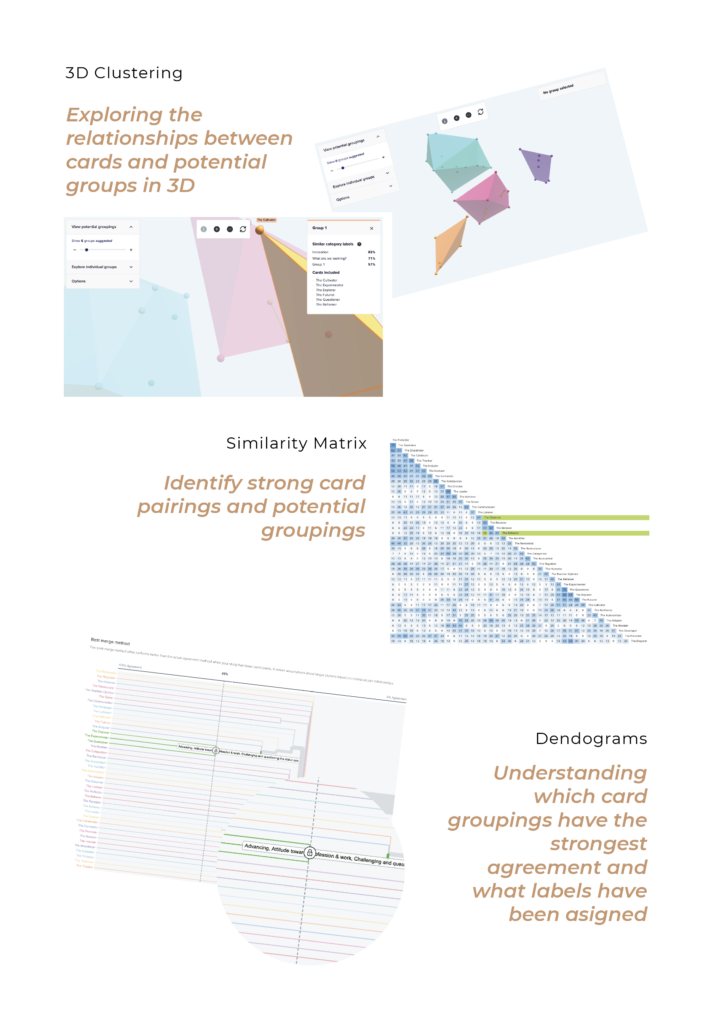
![]()
Defining the information architecture
The results of the card sorting were analysed, and together, with the learnings from the benchmark where Information Architecture was one of the areas of analysis, I defined an initial information architecture for the platform to match the requirements of the project. This, of course, was an interactive process, where a lot of sketching and conceptualization of the platform itself was made.
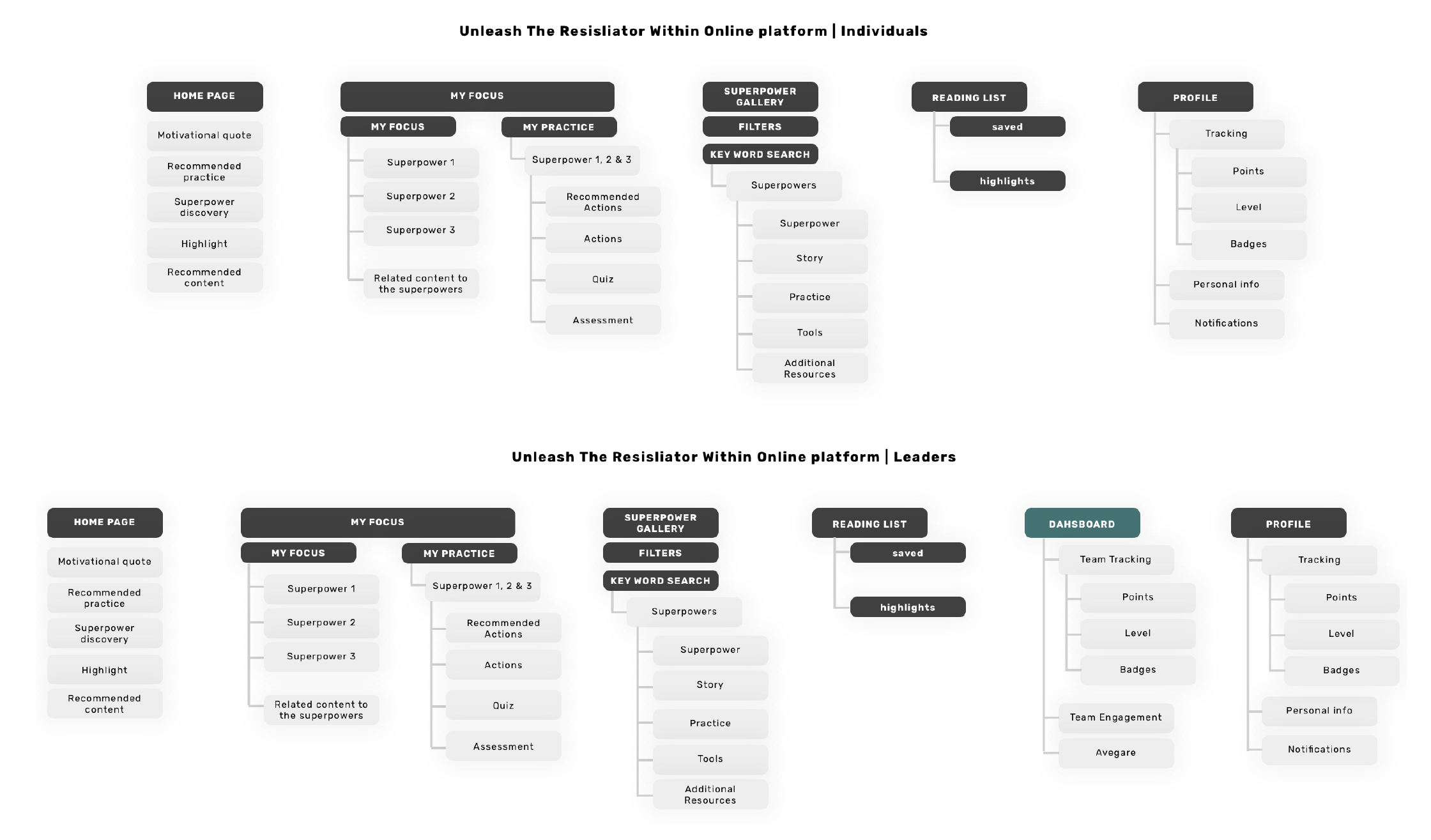
Making decisions about the service
With our learning and insights from the research phase, I feel equipped to start proposing new solutions to our client’s problem.
I started by defining the end to end experience with the program, not just from the onboarding into the platform but to the onboarding on the service. I defined a second Service blueprint to communicate the conceptualisation I was making about the platform, then, collaboratively with de client, we re-defined it.

Crafting the experience
With a more clear picture of the whole experience, I defined the most critical scenarios. Those that would allow the user to navigate the main features of the platform, as well as those that allow us to make the concept of the platform tangible.
Key scenarios for both leaders and individuals, since they will play a different role in the experience.
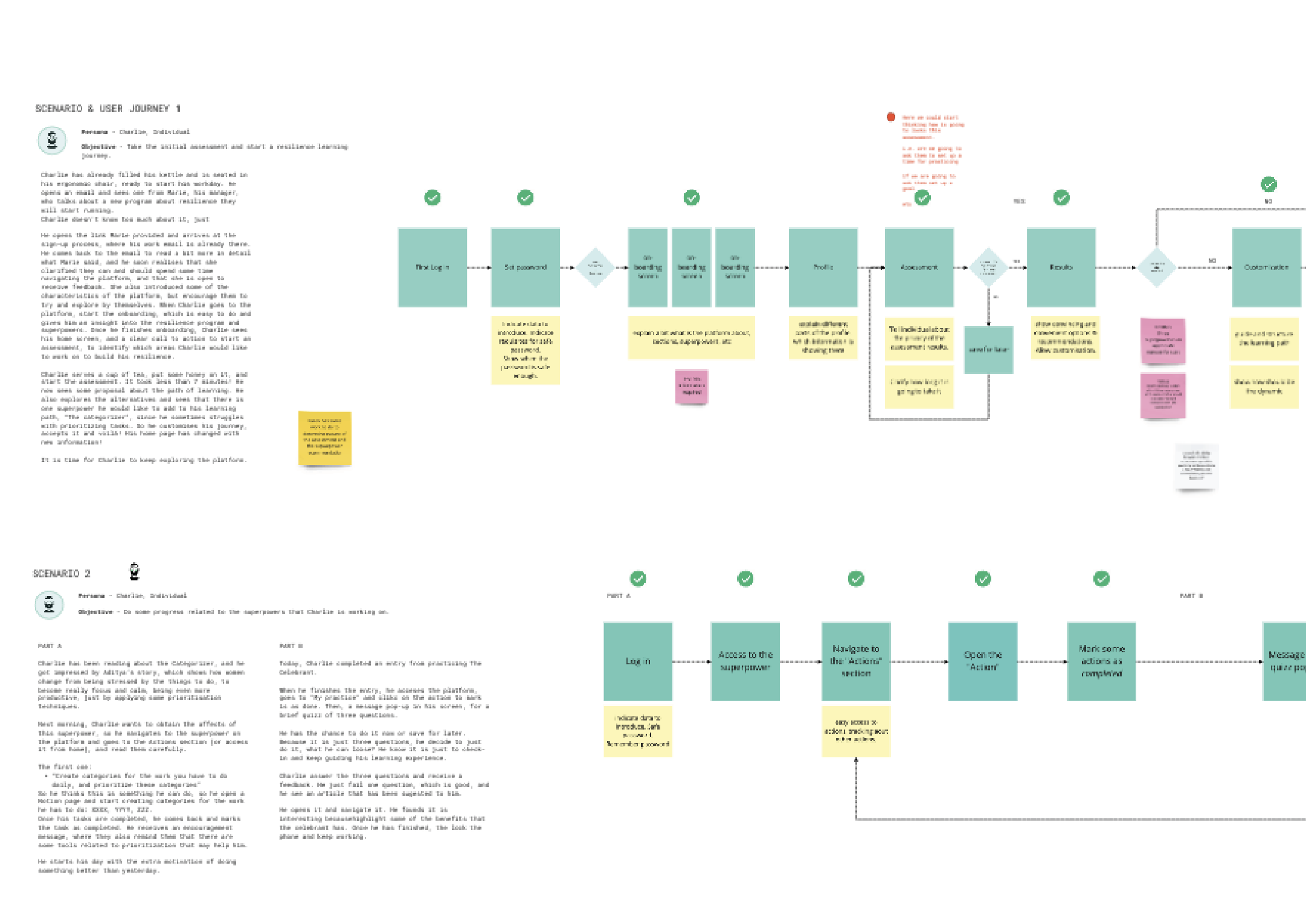
Crafting the experience
With all user flows defined, I started with wireframes on paper, but soon I started on Sketch to define these wireframes and create a system that would allow the user to navigate the platform.
I created a clickable prototype for each of the journeys, so our client can take it and present it to their customer, to evaluate the first impressions and reactions.
![]()
Equipping my client with experiments
to run, test and learn.
Our client wanted to test the prototype on their own, so what I did was create a comprehensive document with the hypothesis I considered critical for the success of the project moving forward, experiments and ways to test those hypotheses, and follow-up questions and recommendations. This was in order to provide my client with a clear path after the prototype was delivered.
![]()
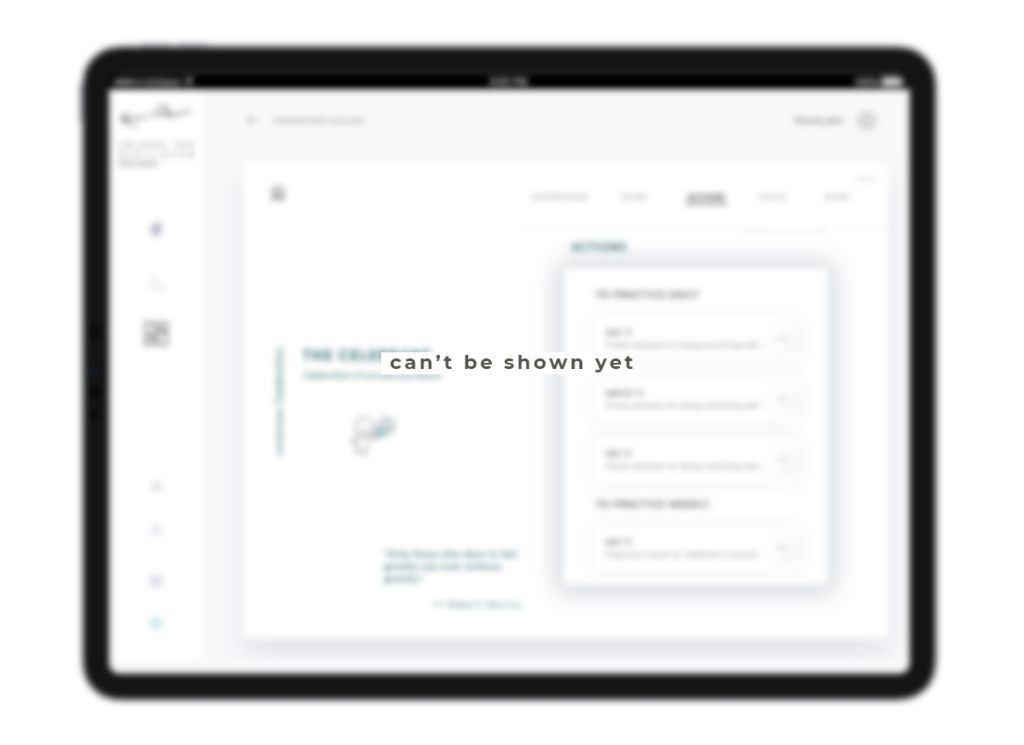
⊙ Designing and facilitating workshops with the client.
⊙ Planning and conducting qualitative and quantitative research ( User Interviews, Card Sorting, Competitive Analysis).
⊙ Synthesising and presenting findings to the client.
⊙ Facilitating the ideation and refinement of ideas.
⊙ Conceptualising the platform.
⊙ Defining key use scenarios.
⊙ Wireframing.
⊙ Creating low-fi and High-fi prototype.
⊙ Developing several service blueprints (different stages of the process).
⊙ Elaborating reports with the deliverables for each stage of the process.
Sketch, InVision, Miro, Zoom, Optimal Workshop, Adobe Creative Suite, Google Cloud,